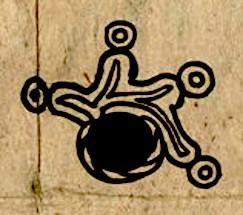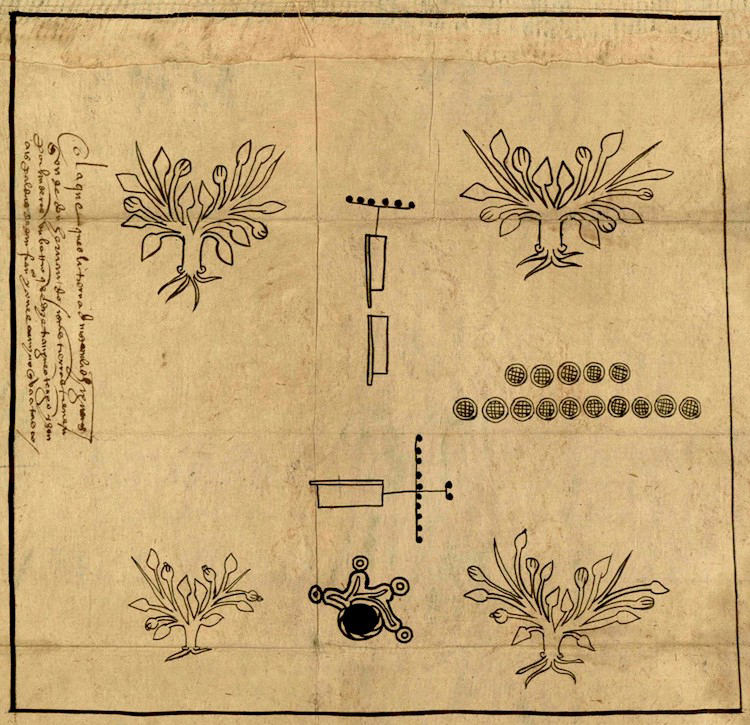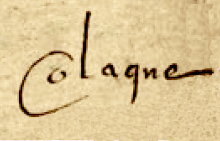Olac (HJ276:79:6r)
This compound glyph is the place name for Olac (perhaps, "At the Rubber Water"), one of the main subdivisions of Cuauhnahuac (Cuernavaca). It consists of a black rubber (olli) ball crowned by a symbol for water (atl). The water has four streams with a droplet (small, concentric circle) at the end of each one. The streams also have internal lines that suggest current. The ball has a white rim around it with slanting lines that look like a twisted trim. The entire glyph is black and white. The locative suffix (-c) is not shown visually.
Robert Haskett
This compound glyph appears on a pictorial manuscript submitted by indigenous petitioners on or around October 5, 1549, as evidence during a land dispute between the Cuernavacan community of Olac and the Marquesado del Valle. One of the pictorials found in the so-called Códice del Marquesado del Valle, it pictures a total of three outlined properties, the others planted in sugar cane or mulberry trees, each of which were related to enterprises being developed by the Marqués at the time. The plot of land in question here is said to have belonged to don Hernando, undoubtedly Cuernavaca’s powerful tlatoani at the time. As well as featuring the place glyph for Olac, the artist rendered twelve xihuitl glyphs, four fig trees (higueras, in Spanish, or hicoxcuahuitl as a partial loan in Nahuatl) and a measurement of forty-six (two pantli linked to six black dots, each equaling “one”) by 32 (one pantli linked to twelve black dots), though the unit of measure is not show here; see contextual image. For more information, see Von Mentz, Cuauhnahuac, 2008, 118, 472; Códices indígenas de algunos pueblos del Marquesado, 1933 and 1883, “Códice núm. 1; and Santiago Sánchez, Códices del Marquesado del Valle, 2003, 86-90.
This rubber ball differs from those in the Codex Mendoza, which have a plain white rim (no diagonal or twisting trim) or no white trim at all. The water also differs in that there are only droplets; they do not alternate with turbinate shells. See comparisons below.
Robert Haskett
Olaque
Olac
Robert Haskett
1549
Robert Haskett
place name, toponym, topónimo, rubber, hule, water, agua, nombres de lugares

Tecpancalli, https://nahuatl.wired-humanities.org/content/tecpancalli (Olac is found in an “Attestations in Sources in Spanish” entry).
Single-page codex, Archivo General de la Nación, México, Ramo de Hospital de Jesús, leg. 276, Exp. 79, fol. 6r.
The Archivo General de la Nación (AGN), México, holds the original manuscript. This image is published here under a Creative Commons license, asking that you cite the AGN and this Visual Lexicon of Aztec Hieroglyphs.





